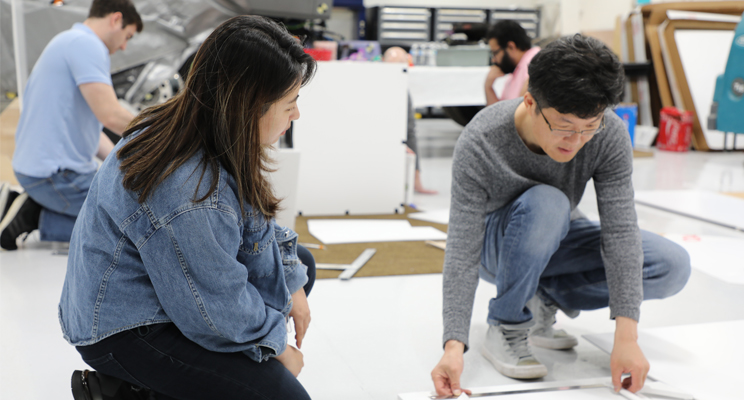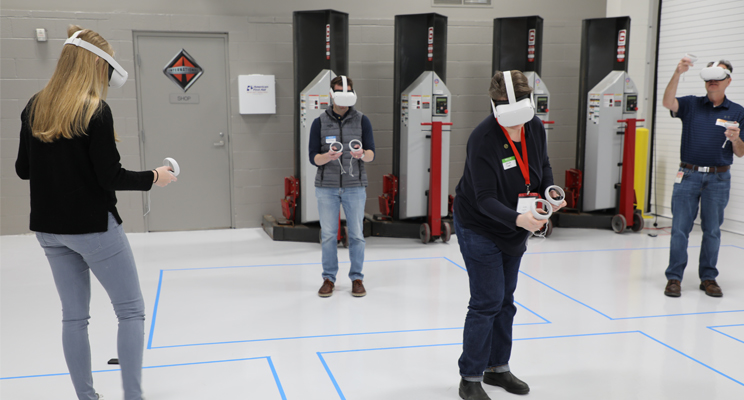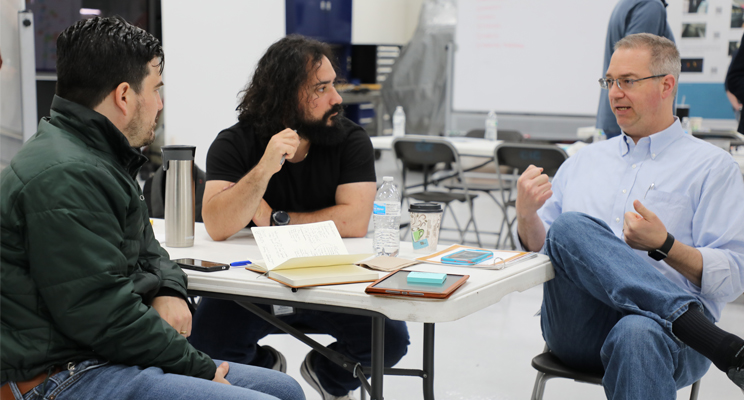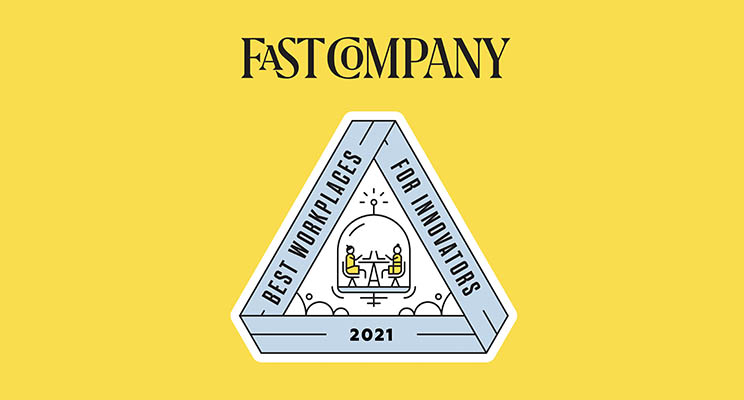Thought Leadership
Julie Ragland
Senior Vice President & Chief Information Officer

Whether you regard innovation as a bolt of inspiration that strikes the lucky few, or as the outcome of a carefully honed design-thinking methodology, you have to admit it’s an in-demand business asset. In my role at Navistar, I’m responsible for IT and the executive sponsor for innovation. Some people think that’s an odd combination – tethering the ephemeral goals of innovation to the data-driven, digitally quantified world of information technology, but increasingly, it just makes sense.
When I started out in IT, we thought in terms of providing employees with systems to support their basic day-to-day tasks. And we still need to do that. But now we are charged with creating digital experiences that go beyond employees to support our customers. And their customers. We have evolved from building systems to discovering solutions. Technology, and the data it gives us access to, are tools we apply to get there. Our ability to employ technology in new ways, to find new answers to big, pressing problems, factors into the way our customers and the world at large perceive us.
The pursuit of innovation is very much about embracing possibility. It requires a fundamental willingness to explore, be curious, and experiment.

Within my team, innovation feels like our persona – manifested through technology. It’s integral to what we do. But this attitude has not traditionally been associated with the culture of big manufacturing companies. Especially ones as big and as old as Navistar, which was an innovator back in the 19th Century as International Harvester. You may be skeptical about our ability to teach an old dog new tricks. I’d argue that it’s our job to open the gate and give that old dog the freedom to achieve the amazing things it is uniquely qualified to do. It’s about liberating one’s mindset. We seek to nurture our strong culture of innovation – rooted in the discipline of human-centered design – and empathizing with the needs of the customer and end user. In other words, innovation serves a real need.
In this two-part article, I talk about how a design-thinking methodology has helped institute the habit of innovation at Navistar. And then in Part Two, I explore some of the insights I’ve discovered along the way … things that you might find useful in your own organization’s quest for transformation.

Innovation means thinking like a designer.
Designers are the ultimate optimists, because they are always looking for a better way to do something. Anyone can (and should) adopt a design-thinking methodology that provokes innovation. One tool I personally like is analogous learning – learning from situations and people that are different from our own but share similar attributes. For example, if we adopted the business model of a pizza franchise, what would our customer experience look like? What disruptions should we anticipate? How would we have to change?
Navistar’s umbrella concept for activities designed to inspire innovation is “ignite!” It underscores the transformational power of insight when empathy for customer perspectives is systematically cultivated.
At Navistar, we have introduced a number of initiatives to promote design-thinking throughout the enterprise.
- Accelerator Week is an intense in-house workshop led by Stanford professors. To conclude the week, Navistar people pitch their best ideas and business models to executive leaders, peers, mentors, and venture capitalists from a variety of businesses in the Chicagoland area.
- As an extension of this program, Navistar has partnered with Chicago’s business incubator organization, 1871, to help turn ideas into successful businesses. This includes participation in their PYROS program, focused on developing go-to-market launch plans.
- Our ignite! Office Hours program has now completed two full seasons and is gearing up for the third. Nearly 200 employees have participated, generating over 125 business ideas that have generated a sales opportunity revenue of over $5 million.
- We have also worked with design company IDEO to develop the Navistar ignite! Learning Experience (NiLE), a program that expands employee knowledge of innovation and human-centered design techniques to create customer-centric insights to products and services. This two-part course teaches employees how to move from insights to actions, including ideation, rapid prototyping and iterating the way forward on a given idea. The formal coursework is supplemented with concrete projects offered up by the executive team. Best of all, this program is designed to be self-sustaining. Navistar employees begin as students, then become facilitators. Over time, they advance to the role of catalysts for tangible innovation projects; and ultimately, they serve as coaches to other students and facilitators.

Each of these projects is interesting on its own merit, but the real pay-off is that the process helps us identify the kind of people who, when pushed out of their comfort zone, manage to thrive.
We’ve seen that people who do well with uncertainty tend to be the kind of leaders who can help incubate and promote innovative thinking.
When we identify these future leaders, we have them lead the next training cohort and make it a priority to promote them into positions where they can influence others. In this way, we are spreading design-thinking and cultural adoption of the methodologies that enable innovation.
Ultimately, our success will be determined by our people, our customers, and our success as an organization. But it’s gratifying to have recently been named one of Fast Company’s Best Workplaces for Innovators, based on our efforts with ignite! and related programs.

The insight behind the creation of this award speaks volumes. Organizations that are serious about innovation need to understand and root out all of the obstacles to innovation. Only when people are encouraged and feel safe about pushing new ideas and approaches will innovation be possible. What we are seeing is that the innovators and the opportunity for innovation have been here all along … we just needed to shine a light on them and help them grow. Or, to borrow a metaphor from our own innovation theme, we just need to give these sparks a little oxygen and watch them ignite.
Please watch for Part Two of this article – which explores other insights to innovation we are discovering on this journey.